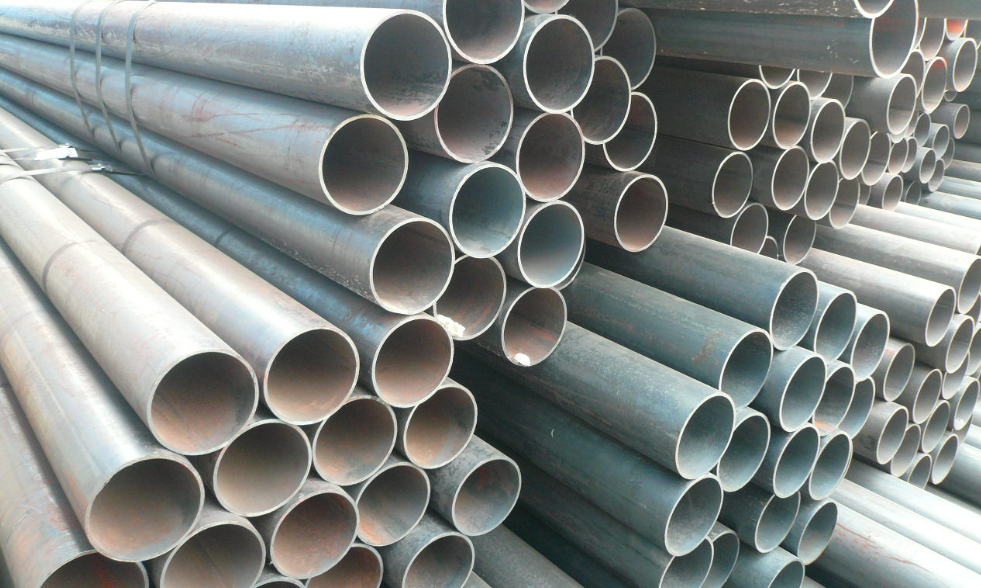Carbon steel pipe and seamless steel pipe are both very common and widely used steel pipes in the market. So, what are the differences between carbon steel pipe and seamless steel pipe? In this article, we will provide a detailed answer to this question.

Differences between Carbon Steel Pipe and Seamless Steel Pipe – 1. Materials
Carbon steel pipe is an alloy composed of carbon and iron, with a carbon content not exceeding 2.11%. They are usually produced using welding technology and are divided into seamless steel pipe and welded steel pipe. Seamless steel pipes, however, are made from a single piece of steel, without any seams. The difference in material and production process results in differences in their properties.
Differences between Carbon Steel Pipe and Seamless Steel Pipe – 2. Production Process
Carbon steel pipes are produced using welding technology, which involves bending and shaping steel plates and then welding them together. The welds produced can reduce the strength and durability of the pipes. On the other hand, seamless steel pipes are produced using the cross-rolling and drawing process, which involves forming a pipe out of a single piece of steel, resulting in a cleaner internal structure and higher strength and durability compared to welded steel pipes.
Application Areas of Carbon Steel Pipe and Seamless Steel Pipes
Due to the differences in the properties and application ranges of carbon steel pipes and seamless steel pipes, their applications in different fields are also different.
- Application areas of carbon steel pipes
Carbon steel pipes are mainly used for the transportation of gas, liquids, and high-speed trains, as well as for the manufacture of mechanical components, structural parts, and various pressure vessels. Due to their relatively simple welding process and relatively low price, carbon steel pipes are a popular choice in some low-pressure environments. - Application areas of seamless steel pipes
Seamless steel pipes have better strength and durability than welded steel pipes, so they are widely used in high-pressure, heavy-duty, and harsh environments such as petroleum, chemicals, aviation, and rail transit. The manufacturing process of seamless steel pipes is also more difficult, and the price is much higher than welded steel pipes.
Carbon steel pipe and seamless steel pipe differ in material and production process, resulting in different application ranges and properties. The selection of the appropriate steel pipe depends on the specific application scenario and requirements. When purchasing steel pipes, it is recommended to consider the use environment, pressure, and other factors for comprehensive evaluation to select the appropriate type of steel pipe.
More information about Carbon Steel Pipe and Seamless Steel Pipe:
Advantages of Carbon Steel Pipe:
Carbon steel pipes have high strength, able to withstand greater pressure and temperature. This makes them have good durability and corrosion resistance when applied to heat exchangers. Due to the good durability of carbon steel pipes, maintenance costs can be reduced and the downtime of heat exchangers can be greatly decreased, greatly improving the operation efficiency and reliability of heat exchangers.
Secondly, carbon steel pipes have lower costs. Due to the mature production process of carbon steel pipes, the production cost is relatively low. At the same time, carbon steel pipes have good plasticity and workability, meeting various complex shapes and being more suitable for mass production, resulting in lower costs.
Thirdly, carbon steel pipes have good corrosion resistance, especially at low temperatures, effectively preventing corrosion and oxidation. This makes carbon steel pipes more suitable for use in harsh environments such as the ocean and chemical industry.
Lastly, carbon steel pipes have a wide range of applications due to their excellent properties. They are not only used in heat exchangers but also in nuclear power stations, oil and natural gas pipelines, ship manufacturing, and other fields. Carbon steel pipes can also be used as supporting and connecting components in building and bridge construction.
Advantages of Seamless Steel Pipe:
- High quality: Seamless steel pipes are produced through an excellent quality management system, with stable chemical composition and good physical performance, ensuring the quality of the pipes.
- High strength: Seamless steel pipes have higher strength due to the absence of welding, with tensile strength and compressive strength much higher than welded steel pipes.
- Good corrosion resistance: The surface of seamless steel pipes is smooth, without any iron oxide, resulting in a longer service life compared to welded steel pipes and better corrosion resistance.
- Precision processing: The inner and outer surfaces of seamless steel pipes are smooth, with small errors and high dimensional stability, suitable for engineering fields that require high precision, such as aviation, aerospace, nuclear industry, etc.
Conclusion
Thank you for reading our article and we hope it can help you to have a better understanding of the differences between Carbon Steel Pipe and Seamless Steel Pipe.
If you want to learn more about carbon steel pipes, we recommend that you visit Huaxia Steel, a leading supplier of carbon steel pipes in China. If you are looking for seamless steel pipes, we suggest that you visit Huaxiao Stainless Steel, a reliable supplier of seamless steel pipes located in Shanghai, the east of China.







